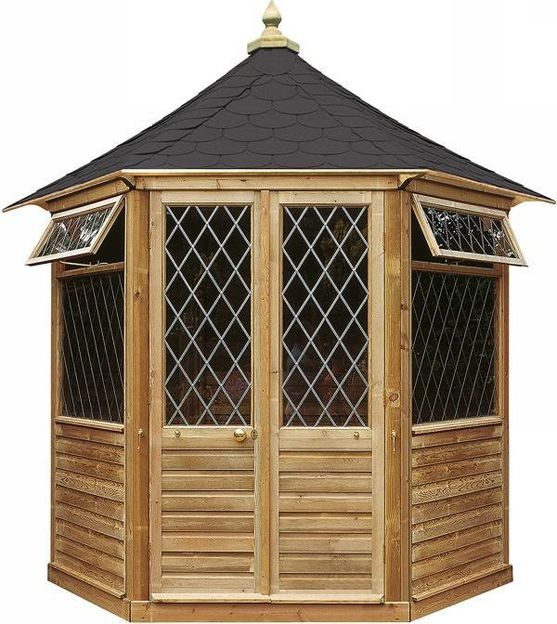Gazebo Assembly Diagrams
Schematics To Make Four-Sided Summerhouse - Uses of Owning a Garden Gazebo

Cut all the rafters to length, making 13-degree angle cuts at the upper ends to fit against the peak beam. Ideally, you should have at least one other person to work with when building and installing your pavilion so that you could complete the project safely. A 12 x 24-foot one typically requires two people to complete and will take anywhere from one to three weeks depending on experience and skill level. Drill pilot holes to prevent the wood from splitting. Measure (https://pergoladrafts.com/10x10-gable-roof-square-gazebo-plans-blueprints) one side only for a square area. Begin building your gazebo by marking six posthole locations using spikes pushed into the ground, then dig oversized postholes that are 24 to 48 inches deep. Because your house also deserves its own style!
Here you will find only originality and creativity, so if you are looking for something special and unique, you are in the right place.
Using the 4-foot level, plumb the face of the post aligned with the brace. Mark the cut lines on the slats and get the job done with a saw. The 6-by-6 and 2-by-8 lumber used in these plans looks great and is more than strong enough for the job. Start by resting three crossbeams across the struts at the support positions and nail them into position. Here are reasons why you should consider having a arbor in your outdoor space. This would create enough room for the support beams to be fully implanted into the ground. The 16mm plywood boards are more than strong enough to form a roof apex without a central beam.
They should start about 8-10 inches above the highest footer. Alternatively, you can use lumber that is slightly thicker or thinner or used peeled poles for constructing your pergola. Again you can offer them the desired decorative effect by cutting their ends with a jigsaw (the original source) on drawn lines. That may not cover your entire patio, but just covering most of an ugly patio makes a huge difference. The area would be a bit larger than the patio to allow some elbow room to spike the timbers. To mitigate this, the post offsets must be measured from a reference point and all measured and cut accordingly.
Procesando video...
Then drill and bolt the support to the deck at the rim joist or attach it at the corners with angle brackets. Next, set each rafter in place on edge on top of the beams spaced 1-foot apart on-center with the end garrets over the support posts. This pavilion is super sturdy, but you can increase the slope of the roof to comply with the local building codes. Once all of the side panels are in place, it's time for the most difficult part of assembly-placing the rafters. Afterwards, apply a few coats of paint or stain to the structure.
The next question we need to answer is would the post be buried in the ground or attached to the concrete. This will not only improve the appearance but also it would reduce the amount of stain you have to apply later on. You will need 65 meters in random lengths of this. Instead, make comfort the top design priority for any outdoor room, since this space is a natural extension of your home. You should also fix your boards at the centre where they pass over joists or noggins. In areas with freezing winters, a concrete footing usually must extend at least 12 inches below the frost line.
Cut lap joints by making multiple cuts with a circular saw, then cleaning out the waste with a sharp chisel. With all the swinging back and forth, this hammock shelter requires a lot of concrete to anchor it to the earth. Fill the tube forms with concrete and let it dry out for several days. A metal pergola will often last around five years as they are susceptible to rust, which is why they are not a popular choice. Rough lumber takes stain but is a poor choice for painting. If the struts would slope, use seismic anchors, as shown above.
The frame was nailed at the joints. Make a 15 degree cut to one end and two 45 degree cuts at the other end. Mark and cut each board to make a clean line along the rafter. Though gazebos are a lovely addition, they are an investment. Set the angle on the circular saw to 45 degrees and rip-cut down the four pencil lines. On the ends, place a cap block and a corner block to create a finished look where the wall steps down. From here you could begin installing the ridge struts from the corners of the header beam to each flat surface of the hub.